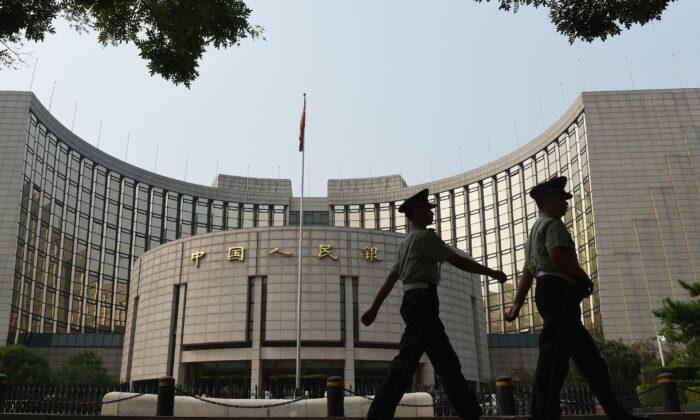News Analysis
The overnight bank lending rates in China has moved 62 percent higher than in the United States as fears of financial risk and inflation in the world’s second largest economy increase.
The secured Shanghai Interbank Offered Rate (SHIBOR) competitive interest rate that Chinese banks offer other domestic banks to borrow money overnight for liquidity jumped by about a half of a percent on Dec. 12 to 2.51 percent on Dec. 17. With the equivalent U.S. overnight bank-to-bank lending rate at 1.55 percent, Chinese banks are now paying about 62 percent more than U.S. banks for overnight liquidity.
Interest rates to borrow money from banks is a function of the risk of the borrower, inflation expectations and liquidity of the lender. Enodo Economics highlights that due to a rising savings rate that reached 52.3 percent of GDP in 2008, “China avoided the boom and bust cycles of emerging markets in Latin America, whose low domestic saving rates resulted in recurrent balance-of-payments crises.”
But the International Monetary Fund cautioned in August that China is about to suffer its first series of annual balance of payments deficits in 25 years as its rapidly aging population is now spending their retirement savings. With China’s domestic savings rate having fallen in 2018 to 45.2 percent and headed substantially lower, the IMF stated that China needs to slash domestic spending or increasingly rely on foreign bank loans.
The increase in China borrower risk was on full display last month as the commodities trader Tewoo Group, wholly-owned by the city of Tianjin, defaulted on $2.1 billion in bonds—it marks the largest failure to repay dollar debt by a state-owned company in two decades. With investors forced to take losses of up to 64 percent of principal losses, Endo Economics warned: “The market has been building to something like this” and it “cannot be assumed to be backed by the state when it comes to bond repayment.”
With economic growth at the slowest pace in three decades, Fitch Credit Ratings estimates that a wave of missed interest payments in the $4.4 trillion corporate bond market pushed the Chinese private sector default rate to a modern record 4.9 percent at the end of November, up over eight times the .06 percent default rate in 2014.
Chinese companies often have arrangements with other local companies “to guarantee a loan for another to convince banks to lend more. In theory, this helps spread risk.” But cross-guarantees during financial stress can cause a cascading waterfall of defaults.
Fitch warns that as bank “access to once-flush liquidity tightens,” Chinese state-owned and private companies face tighter lending standards and higher interest rates in 2020.
Enodo Economics comments that China has declared budget deficits as a percentage of GDP since 2012. The official rate in November was a 2.8 percent deficit. But if calculated according to “Augmented IMF Deficit” that includes sales of state-owned land and assets, the annual deficit in 2019 skyrocketed to 12.7 percent, or about $1.7 trillion.
China became the world’s largest holder of U.S. Treasury bonds as its foreign exchange reserves reached almost $4 trillion in June of 2014. But foreign exchange fell to about $3 trillion since January 2017. China has fallen below Japan as the largest holder of U.S. debt after selling off over $38 billion of U.S. treasury securities in 2019.
Enodo Economics argues that the the credibility of the Chinese Communist Party (CCP) is based on using its “iron fist” to maintain high employment and low inflation. But as a slowing economy shed millions of workers, China’s consumer price index rate of inflation that averaged about 2 percent since 2012 has relentlessly risen to 4.4 percent in November 2019.
Chriss Street is an expert in macroeconomics, technology, and national security. He has served as CEO of several companies and is an active writer with more than 1,500 publications. He also regularly provides strategy lectures to graduate students at top Southern California universities.





